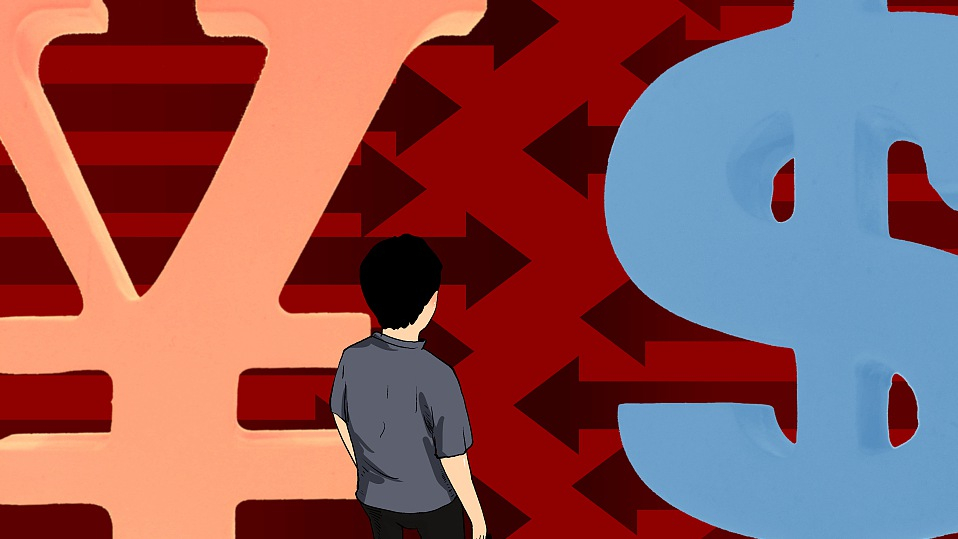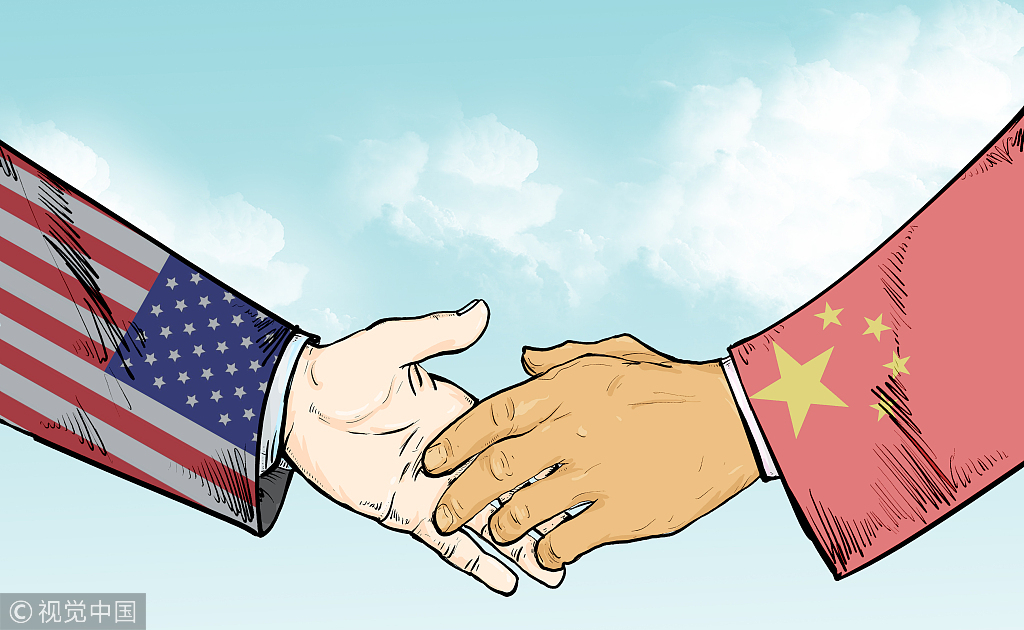
Opinion
22:21, 23-Mar-2019
U.S.-China trade war: What has happened and what is next
Updated
12:59, 24-Mar-2019
Fiona Liu

Editor's note: Fiona Liu is a Junior Quantitative Analyst from Societe Generale. The article reflects the view of the author, and not necessarily those of CGTN.
The trade dispute originated from U.S. President Donald Trump who believed that there were subsidies and other unfair competition practices in China-U.S. trade. He signed a memorandum on March 22 of last year to announce the intervention. And on the same day, the U.S. also released the Section 301 report which instructs U.S. trade representatives to impose tariffs on goods imported from China to punish China for alleged theft of the U.S. intellectual property rights and trade secrets.
As the trade war escalates, so far, the U.S. has imposed three rounds of tariffs: Over 250 billion U.S. dollars worth of Chinese import. Beijing has retaliated with duties on 110 billion U.S. dollars worth of U.S. import, accusing the U.S. of starting “the largest trade war in economic history.”
This practice is increasingly causing concerns in the American business community, and people are worried that even if negotiations are reached, the economic losses and uncertainties caused by the Trump administration's trade war may continue.
The Trump administration's tariffs are damaging an industry that was intended to protect, stated in a report commissioned by the largest commercial lobbying group in the U.S. on March 15. The report, written by the U.S. Chamber of Commerce and research firm Rhodium Group, pointed out that Trump's tariffs on 250 billion U.S. dollars worth of Chinese goods are eroding the competitiveness of the U.S. information technology industry – including manufacturing computers and electronics, and telecommunications equipment, companies that provide services such as cloud computing, and so on.

U.S.-China trade war. /VCG Photo
U.S.-China trade war. /VCG Photo
The report estimates that if tariffs continue to take effect, U.S. GDP will be reduced by at least one trillion U.S. dollars in 10 years.
Up to now, the trade negotiations between the U.S. and China have entered the final but the most difficult stage. Both sides are interested in bringing this long-running trade war to an end as soon as possible, but Washington and Beijing are reluctant to make too many compromises, thus making them face some problems in pushing the domestic agenda. The Trump administration's tariff measures are facing increasing domestic criticism, and at the same time, the pressure on China's economic downturn is growing.
The two U.S. and Chinese rivals have made the third-party gain profits. According to Rhodium Group: "China and the U.S.—in that order—suffer the biggest hits to potential GDP growth, while the rest of the world benefits from diverted trade and investment. U.S.-China tech decoupling leads to global GDP averaging 0.1 percent to 0.2 percent (100 billion U.S. dollars to 150 billion U.S. dollars) lower than baseline each year over the first five years after tariffs implemented. Within two years, GDP in the rest of the world is higher than trend projections, with countries in regional supply chains—Canada and Mexico, and to a lesser extent East Asia ex-China—benefiting most."
This conclusion clearly runs counter to the original intention of Trump's trade war with China. But for now, the U.S. trade representative of the Trump administration leading the U.S.-China trade negotiations, Robert Lighthizer, still wants to regard tariffs as an important bargaining chip for negotiations with China. At the last moment of the U.S.-China trade negotiations, the biggest difference between the two sides is that the U.S. insists on retaining the right to adopt unilateral tariff measures against China to ensure that China fulfills its promises.
China has always opposed the U.S. proposal and believes that the U.S. request has broken through the bottom line of China. China cannot give up the right to retaliate when necessary. The enforcement mechanism for a prospective deal to end the trade war between China and the U.S. must be “two way, fair and equal,” according to Chinese Vice Minister of Commerce Wang Shouwen at a press conference in Beijing on March 9.
On Tuesday, March 19, S&P 500 and Dow Jones end in red after reporting China may push back against American demands in trade talks as progress slows toward a deal that President Donald Trump was optimistic about and counted to boost for his 2020 reelection bid.
(If you want to contribute and have specific expertise, please contact us at opinions@cgtn.com)

SITEMAP
Copyright © 2018 CGTN. Beijing ICP prepared NO.16065310-3
Copyright © 2018 CGTN. Beijing ICP prepared NO.16065310-3